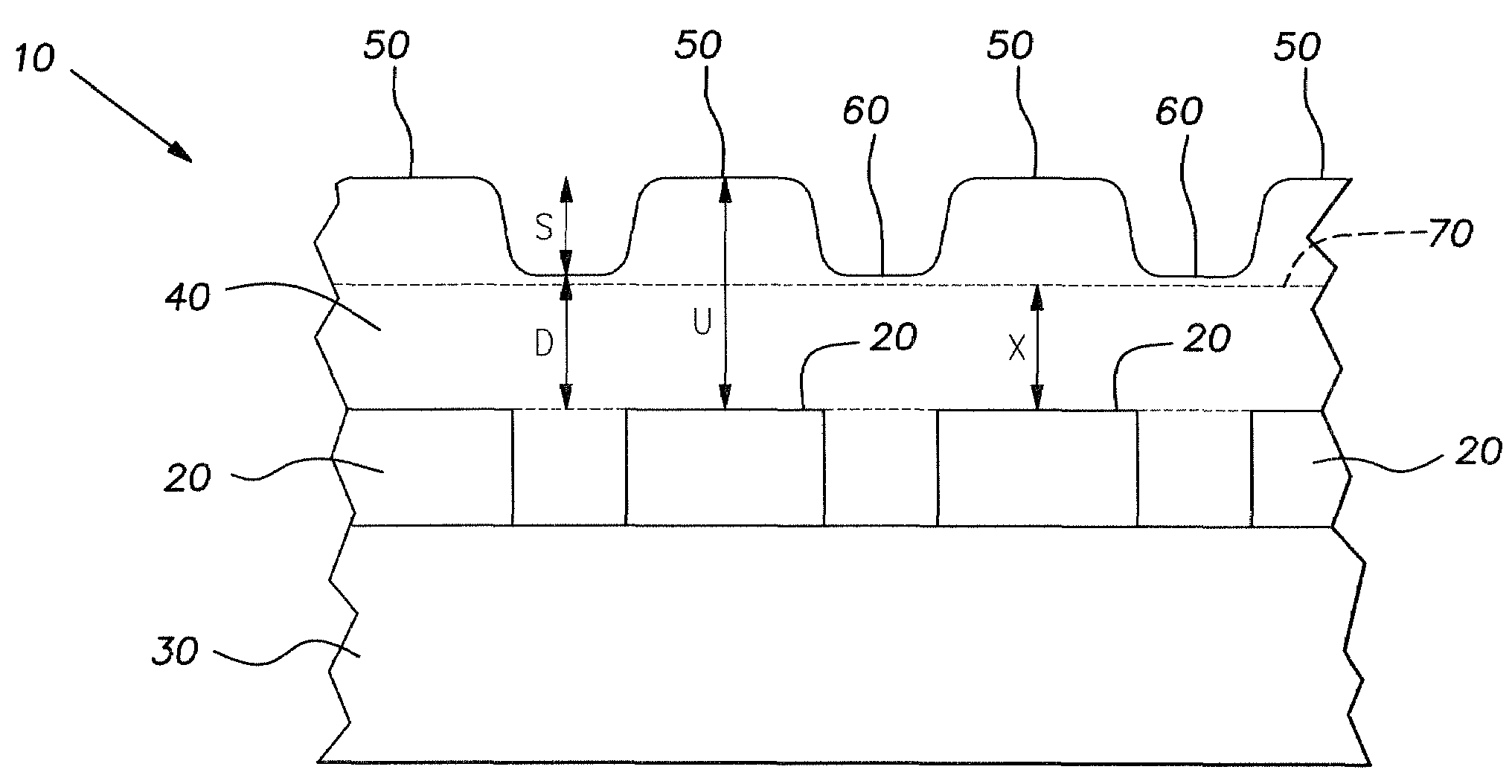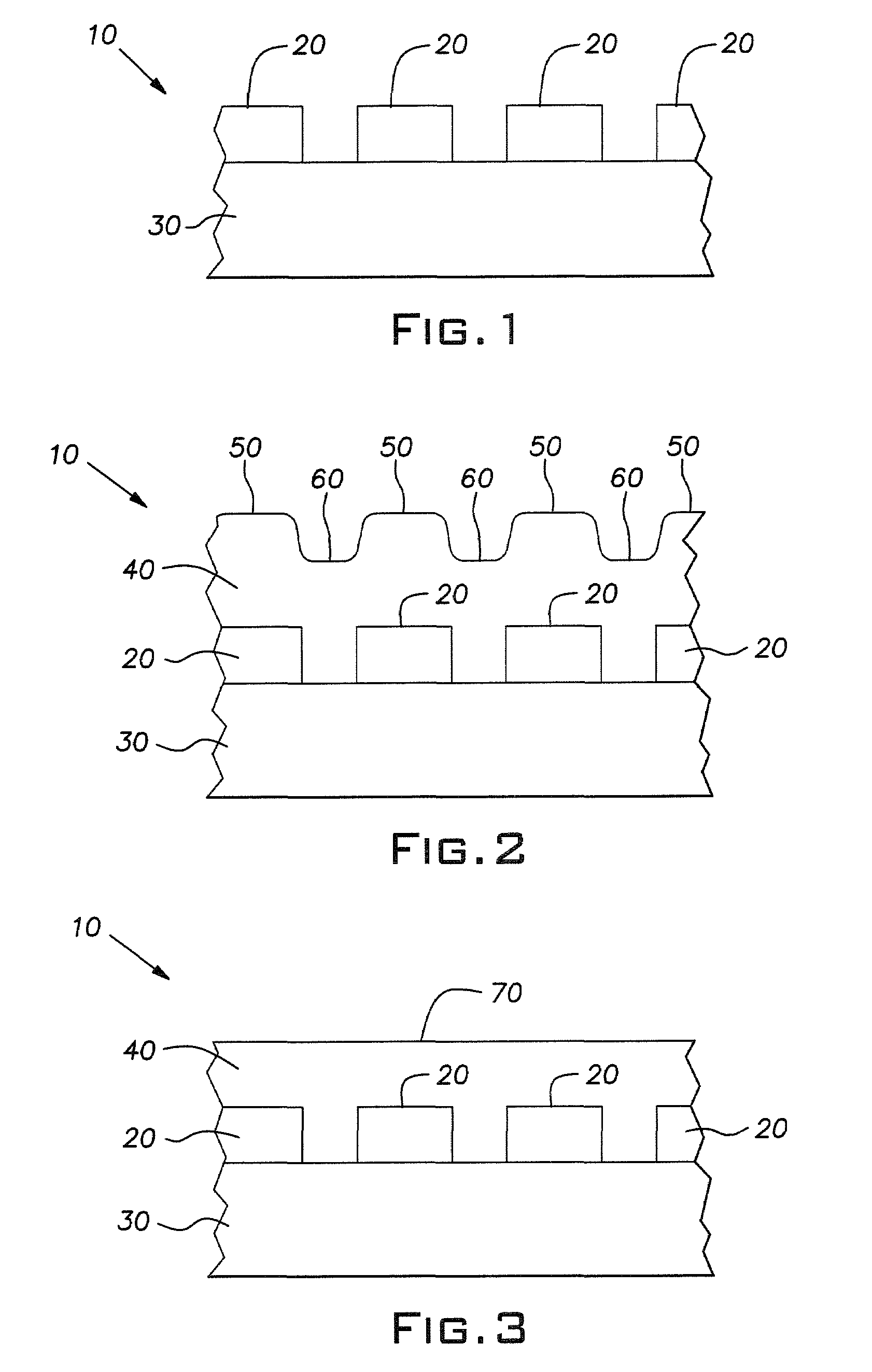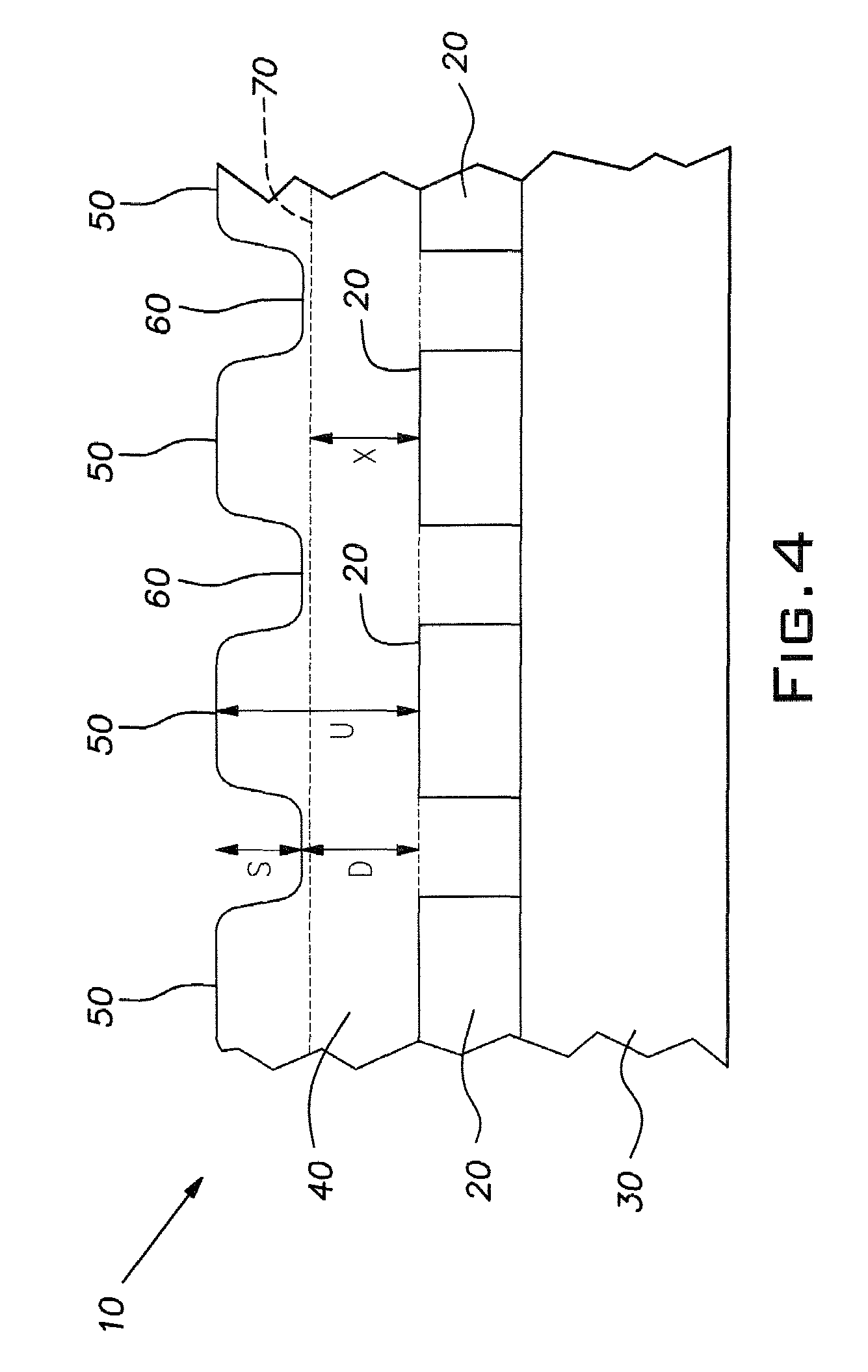Auto-stopping slurries for chemical-mechanical polishing of topographic dielectric silicon dioxide
a topographic dielectric silicon dioxide and chemical-mechanical technology, applied in the direction of other chemical processes, manufacturing tools, chemistry apparatus and processes, etc., can solve the problems of disadvantageous thinning of the resultant ild layer, non-uniformity of polishing stop techniques, etc., to achieve moderate to elevated up area topography removal rate, reduce post-cmp non-uniformity, and prolong the effect of polishing tim
- Summary
- Abstract
- Description
- Claims
- Application Information
AI Technical Summary
Benefits of technology
Problems solved by technology
Method used
Image
Examples
example 1
[0040]Auto-stopping CMP Slurry 1 was formed by dispersing 2.0% ceria particles, 0.008% PEI and 0.1% of an ethylene oxide / propylene oxide nonionic block copolymer in water (all percentages stated by absolute weight of the resulting slurry). The ceria particles had an average primary particle diameter of 70 nm and an average secondary particle diameter of 180 nm. The PEI had a weight average molecular weight of about 10,000. The ethylene oxide / propylene oxide nonionic block copolymer had a weight average molecular weight of about 1,500. Nitric acid was added to adjust the pH of the slurry to 3.9.
[0041]Auto-stopping Slurry 1 was used to planarize pattern wafers containing features with various pitches and densities designed by MIT and Sematech. Before the CMP process, the average up oxide thickness of the pattern features was 37,500 Å and the average down oxide thickness of the pattern features was 20,000 Å. The thicknesses of up oxide and down oxide of nine 100-micron pitch / 70% densit...
example 2
[0044]Auto-stopping CMP Slurry 2 was formed by dispersing 6.0% ceria particles, 0.02% PEI and 0.3% of an ethylene oxide / propylene oxide nonionic block copolymer in water (all percentages stated by weight of the resulting slurry). The ceria particles had an average primary particle diameter of 70 nm and an average secondary particle diameter of 140 nm. The PEI had a weight average molecular weight of about 25,000. The ethylene oxide / propylene oxide nonionic block copolymer had a weight average molecular weight of about 1,500. Nitric acid was added to adjust the pH of the slurry to 4.7.
[0045]Auto-stopping Slurry 2 was used to planarize pattern wafers containing repeating features consisting of 3,200-micron wide / 3,200-micron long up oxide with adjacent 320-micron wide / 3,200-micron long down oxide throughout the entire wafer. Before CMP process, the average up oxide thickness of the pattern features was about 41,700 Å and the average down oxide thickness of the pattern features was abou...
example 3
[0051]COMPARATIVE CMP Slurry 3 was formed by dispersing 0.75% ceria particles and 0.075% ethylene oxide / propylene oxide nonionic block copolymer in water (all percentages stated by weight of the resulting slurry). The ceria particles had an average primary particle diameter of 70 nm and an average secondary particle diameter of 140 nm. The ethylene oxide / propylene oxide nonionic block copolymer had a weight average molecular weight of about 1,500. Nitric acid was added to adjust the pH of the slurry to 4.0. These slurry conditions were selected to produce a topography removal rate similar to that achieved using Auto-stopping CMP Slurry 2 from Example 2.
[0052]Auto-stopping CMP Slurry 2 and COMPARATIVE CMP Slurry 3 were used to polish 200 mm MIT / Sematech pattern wafers as described in Example 1, except that the wafers used for COMPARATIVE CMP Slurry 3 had thinner TEOS oxide thicknesses (the average up oxide thickness was 22,000 Å and the average down oxide thickness was 13,000 Å). The...
PUM
| Property | Measurement | Unit |
|---|---|---|
| mean volume secondary particle diameter | aaaaa | aaaaa |
| mean volume size | aaaaa | aaaaa |
| mean volume size | aaaaa | aaaaa |
Abstract
Description
Claims
Application Information
 Login to View More
Login to View More - R&D
- Intellectual Property
- Life Sciences
- Materials
- Tech Scout
- Unparalleled Data Quality
- Higher Quality Content
- 60% Fewer Hallucinations
Browse by: Latest US Patents, China's latest patents, Technical Efficacy Thesaurus, Application Domain, Technology Topic, Popular Technical Reports.
© 2025 PatSnap. All rights reserved.Legal|Privacy policy|Modern Slavery Act Transparency Statement|Sitemap|About US| Contact US: help@patsnap.com



